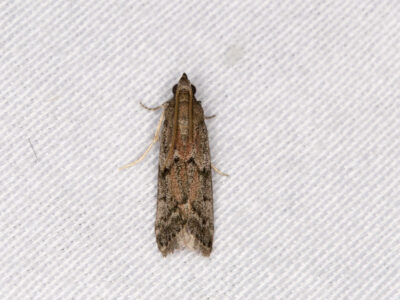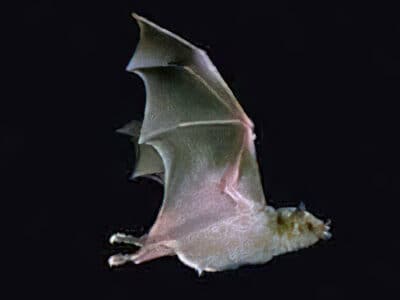Weimaraner
Canis lupus
The Weimaraner is nicknamed the gray ghost.
Advertisement
Weimaraner Scientific Classification
- Kingdom
- Animalia
- Phylum
- Chordata
- Class
- Mammalia
- Order
- Carnivora
- Family
- Canidae
- Genus
- Canis
- Scientific Name
- Canis lupus
Read our Complete Guide to Classification of Animals.
Weimaraner Conservation Status
Weimaraner Facts
- Diet
- Omnivore
Weimaraner as a Pet:
- General Health
- Energy Level
- Shedability
- Trainability
- Intelligence
- Tendency to Chew
- Size
- Family and kid friendliness
- Yappiness / Barking
- Moderate
- Separation Anxiety
- High
- Preferred Temperature
- Average climate
- Exercise Needs
- High
- Friendly With Other Dogs
- Moderate
- Dog group
- Sporting
- Male weight
- 70-90 lbs
- Female weight
- 55-75 lbs
This post may contain affiliate links to our partners like Chewy, Amazon, and others. Purchasing through these helps us further the A-Z Animals mission to educate about the world's species.
View all of the Weimaraner images!
The Weimaraner is also nicknamed the “gray ghost” for its light gray coat and eye color.
The Weimaraner is a big sporting dog that originated from 19th century Germany. The very first members of this breed were used by the German aristocracy to hunt large game such as boar, deer, and bears. After these animals started to decline, the breed was put to work hunting smaller game such as hares and waterfowl. The technical term for this type of dog is a pointer because it points at the game with its snout.
See all of our expert product reviews.
The most important person in the development of this breed was Grand Duke Karl August, who presided over the cities of Weimar, Eisenach, and Jena in central Germany. It was said that he crossed Bloodhounds with several different types of German and French hunting dogs to create this breed. The Weimaraner did not arrive in the United States until the 1920s, but its popularity rose quickly, thanks to a boost from several well-known figures, including President Eisenhower.
The Weimaraner is characterized by long, slender legs, a prominent snout, drooping ears, amber or blue-gray eyes, and a docked tail. A short coat with solid blue, gray, or silver fur is the accepted standard. A long-haired variety with a feathered tail is recognized by many kennel clubs around the world but not the AKC. This breed has many qualities to recommend it, including keen intelligence, impressive athleticism, a friendly personality, and a trainable disposition, but be prepared to spend a lot of time with this dog, caring for its needs.

3 Pros And Cons Of Owning A Weimaraner
| Pros! | Cons! |
|---|---|
| Friendly The Weimaraner is extremely affectionate with adults and children alike. | Needs Lots of Activity The Weimaraner needs a job to do, or else it might turn destructive. |
| Trainable and Obedient Owners should have minimal trouble teaching this breed the rules of the home. | Bloating If this dog eats and drinks too much at once, it can cause a very serious health problem. |
| Athletic and Playful This breed is a great choice for the athletically-minded owner. | Chewing Problems This breed likes to chew on objects, especially if it’s bored. |

©DragoNika/Shutterstock.com
Size And Weight
The Weimaraner is a medium to large-sized dog with a rather lean and athletic frame. Males tend to be a lot larger than females.
| Height (Male) | 25 to 27 inches |
| Height (Female) | 23 to 25 inches |
| Weight (Male) | 70 to 90 pounds |
| Weight (Female) | 55 to 75 pounds |
Common Health Issues

Weimaraner dogs are prone to several health conditions and should be taken for regular vet checkups.
Health and Entertainment for your Weimaraner
See all of our expert product reviews.
©svetastar/Shutterstock.com
While the Weimaraner has a good lifespan of 10 to 13 years, it is prone to suffer from several health conditions, including hypothyroidism, progressive retinal atrophy, cancer, bleeding or blood clotting disorders, and defective eyelashes, which can irritate the eyeball.
Another important problem to look out for is gastric dilatation-volvulus, also called bloating, in which the stomach can start to twist and stretch due to excess gas or air. This can occur if the dog eats and drinks too quickly and then exercises soon afterward. It is a potentially life-threatening condition that can be identified by a bloated abdomen, excessive salivating, lethargy, and a fast heartbeat. It will require immediate medical attention.
In addition to this, the breed may be prone to injuries, accidents, sprains, and pulls. In order to minimize the odds of developing problems, all good breeders will evaluate their dogs for common health conditions. You should also ask your vet to provide a thorough health checkup on a regular basis. In summation, these are the most common health problems for this breed:
- Progressive Retinal Atrophy
- Hypothyroidism
- Bloating
- Cancer
- Bleeding Disorders
Temperament

The Weimaraner can be playful and rambunctious and needs constant mental stimulation.
©iStock.com/alberto clemares expósito
The Weimaraner has many of the qualities that one would expect in a good pet and canine companion. Their personality is affectionate, fearless, obedient, and smart. They will play with you one moment and cuddle up with you the next, all while assuming the role of a watchdog and guardian.
This does not mean, however, they are always on their best behavior. The Weimaraner can be a bit willful and rambunctious. It loves to chew objects and chase after small animals. And it needs constant mental stimulation throughout the day to satisfy its active and roaming mind. As long as you give it something to do during the day, it should be on good behavior.
How To Take Care Of The Weimaraner
The Weimaraner is a good choice for someone with at least some previous experience owning a dog. This breed requires time and energy to get the most out of it. It also needs a good amount of space and doesn’t necessarily adapt that well to apartment living.
The Best Dog Food For Weimaraners

Dog food is food specifically formulated and intended for consumption by dogs and other related canines.
©Laura Beach/Shutterstock.com
The Weimaraner needs about 2.5 to 3.5 cups per day, depending on its size, age, and activity level. Since this breed has a tendency to suffer from bloating, it is a good idea to divide this amount of food into two separate meals per day. Closely monitor your dog’s eating to control portion sizes and avoid eating back-to-back with play or walk time to keep bloat at bay. If your dog’s stomach or endocrine system seems to be sensitive to certain foods, perhaps look into some limited-ingredient dog foods. Consult your vet about dietary advice and any potential health conditions.
At A-Z Animals, our pick for the best dog food for Weimaraners is Stella & Chewy’s Wild Red Stews Wet Dog Food.
This meaty stew-style food has chicken and turkey, plus pumpkin for natural fiber that assists with problem-free digestion and an unstoppable immune system. 95% of the quality protein in this food comes from animal sources and the beta-carotene is great for your Weimaraner’s eyes.
Stella and Chewy’s Wild Red Stews Wet Dog Food is available on Chewy and Amazon.
- High-Protein recipe with cage-free chicken and turkey in a savory broth
- Fortified with vitamins, minerals and amino acids to aid in digestive health
- Veggies for an antioxidant boost
- Grain-Free with no unnecessary fillers and only the finest ingredients
Maintenance And Grooming

This breed likes to roll in the mud so bathing regularly might be necessary.
©iStock.com/Wirestock
This breed’s short, smooth coat is a cinch to groom. It should require no more than weekly grooming with a simple bristle brush to remove loose and dead hair, even when it’s shedding. The most difficult part of its grooming, surprisingly, may be the nail clipping, because once they get out of hand, they can be difficult to control again. If the nails start to click on the floor, then they should be trimmed immediately. Long nails can make the dog feel uncomfortable and affect its gait.
Another important aspect of its care is regular ear checks. The dog’s ear structure can sometimes restrict airflow, leading to harmful infections. You can clean them out with a simple cotton ball and cleanser recommended by a vet. This breed also likes to get dirty or roll in the mud, so give it a bath whenever necessary. The final piece of advice is that you should brush their teeth a few times a week with a toothpaste recommended by the vet.
Training
The Weimaraner is smart, capable, and eager to learn, but they can also grow bored easily without proper mental stimulation. The key is to be creative but consistent. Don’t change your commands or expectations in the middle of the training process, but do keep things interesting and engaging to maintain the dog’s attention. Training classes are recommended if you are struggling at all with the process.
Exercise

Weimaraner prefers intense exercise and needs at least one hour of exercise per day.
©iStock.com/MartinFredy
Full of boundless energy and curiosity, the Weimaraner needs at least an hour of exercise per day. While walking will satisfy some of their needs, they really prefer intense exercises such as jogging, hiking, and fetching. The goal is to burn off enough energy so they’re tired and settled down for the rest of the day. However, you might want to be careful about letting this dog off the leash, because they might have a tendency to chase after smaller animals.
Puppies
Weimaraner puppies go through an interesting physical and mental development. They are born with long stripes on their body, which start to fade within a few days, and bright blue eyes, which also start to become more amber or gray over time. Socialization and housetraining should begin shortly after first obtaining your puppy.
Crate training can be an important asset in these early stages to give your dog a safe, clean space to which it can retreat. By around the four to six-month mark, the puppies should begin to learn more advanced commands and rules. If you plan to have your dog spayed or neutered (which is recommended in most cases for health and behavioral reasons), then this should probably be done by the dog’s first birthday.

©applepie agency/Shutterstock.com
The Weimaraner and Children
This pet is an excellent choice for homes with younger children. They are gentle, affectionate, and very obedient, even within large families.
Dogs Similar To The Weimaraner
If you are a fan of the Weimaraner, then there are plenty of other large athletic gun dogs to choose from.
- Brittany: Originating from the Brittany region of France, this medium-sized gun dog is equally sweet-natured and easy to train. They are characterized by a short tail, drooping ears, and flowing medium-length fur with orange and white, liver and white, and tri-color combinations.
- Irish Setter: This big gun dog is easily distinguished by the long coat of silky red or chestnut fur. The Irish Setter is an enthusiastic companion with an expressive face and graceful bearing.
- French Spaniel: This is an all-around great companion: affectionate, gentile, calm, and intelligent. It has white and brown spotted fur with a long, feathered tail and drooping ears.
Famous Weimaraner Dogs
The Weimaraner rose to popularity in the 1950s, thanks in part to several famous owners. President Dwight D. Eisenhower owned a pet called Heidi. She only lived in the White House for a short time before she went to live on the Eisenhower farm in Gettysburg, Pennsylvania. Actor Grace Kelly also received one as a wedding gift in 1956 during her marriage to Rainier III, the Prince of Monaco. The Weimaraner was also the subject of William Wegman’s artwork in which he dressed the dogs up in various costumes and poses.
Popular Names for the Weimaraner
If you’re looking for a good name, then you might want to consider the following options:
- Fritz
- Otto
- Heidi
- Rudy
- Ghost
- Roxy
- Bella
- Duke
- Blu
- Gunnar
Weimaraner FAQs (Frequently Asked Questions)
What is a Weimaraner?
The Weimaraner is a large, athletic pointer that originated from Germany in the 19th century. It is beloved for its affectionate, obedient, and fearless temperament. While not hypoallergenic, its shedding is fairly minimal. The average lifespan is 10 to 13 years.
Is a Weimaraner a good family dog?
Yes, it is considered to be an excellent companion for adults and children of all ages.
Are Weimaraners aggressive?
Unless badly trained, the Weimaraner exhibits remarkably little aggression for a dog of its size.
Do Weimaraners bark a lot?
This breed will bark if excited or alerted, but it’s not an excessive barker.
How much does a Weimaraner cost?
The price of a new Weimaraner puppy is normally anywhere between $500 and $1,500. If the price seems a little too steep, then you might want to consider adoption from a rescue shelter. There are plenty of rescues that take in dogs that need a loving home. There might even be a Weimaraner-specific rescue in your area. The price of adoption is usually no more than a few hundred dollars.
What is the best way to learn how to pronounce Weimaraner?
It’s relatively easy to learn how to pronounce the name. Weimaraner is usually pronounced as why-mah-rah-ner in English. The “W” is sometimes replaced with a hard German “V” sound instead, but don’t bother trying to learn how to pronounce it with a German accent. English is fine.
Why were Weimaraners originally bred?
The Weimaraner was originally bred to hunt large animals such as boar and deer. It was later put to use hunting smaller game as well. It is considered to be a type pointer.
What's the difference between the Weimaraner and the Vizsla?
The Vizsla is smaller compared to the Weimaraner, though the Weimaraner lives a slightly shorter lifespan on average. Additionally, the Weimaraner only comes in gray, while the Vizsla only comes in red.
What's the difference between the Weimaraner and the Doberman?
The Weimaraner is shorter than the Doberman, though the Weimaraner tends to weigh more. Additionally, the Weimaraner comes in gray or silver only, while the Doberman comes in a variety of colors.
What's the difference between the Weimaraner and the Great Dane?
The Great Dane is larger than the Weimaraner, though the Weimaraner lives a longer lifespan compared to the average Great Dane. Additionally, the Great Dane requires less exercise than the energetic Weimaraner.
What's the difference between the Weimaraner and the Silver Labrador?
The Weimaraner has a docked tail, while the silver lab has a long, fluffy tail. Additionally, the silver lab lives a slightly longer life compared to the average Weimaraner.
Thank you for reading! Have some feedback for us? Contact the AZ Animals editorial team.
Sources
- American Kennel Club, Available here: https://www.akc.org/dog-breeds/weimaraner/
- American Kennel Club, Available here: https://www.akc.org/expert-advice/lifestyle/ways-weimaraners-are-like-no-other-dogs/
- Dogtime, Available here: https://dogtime.com/dog-breeds/weimaraner#/slide/1


















